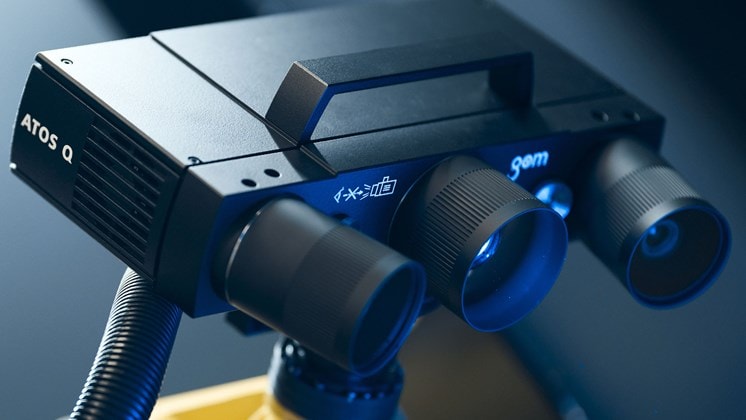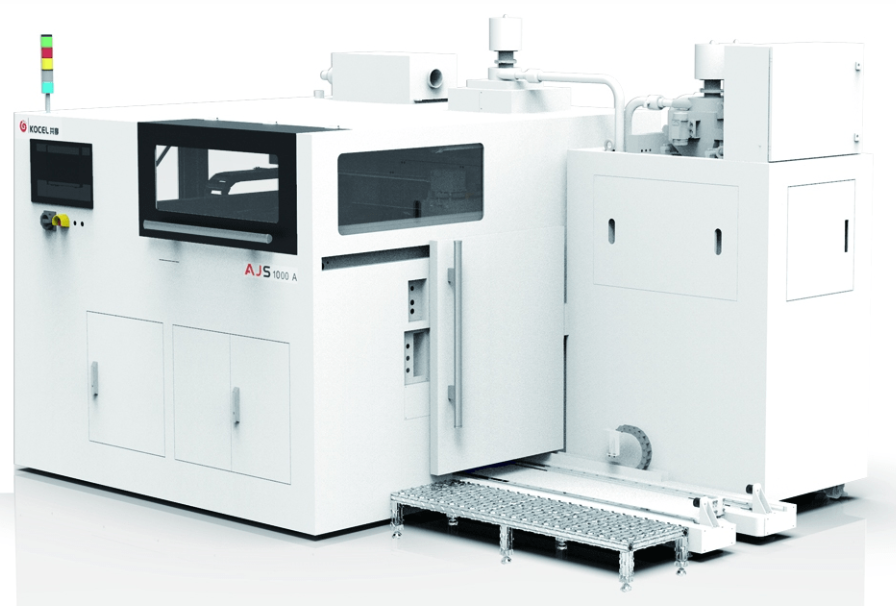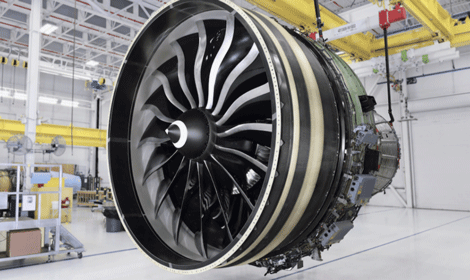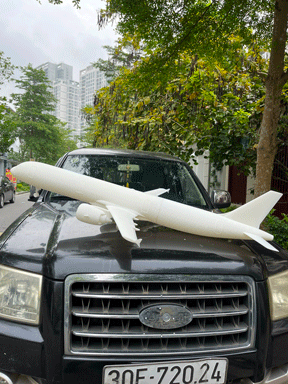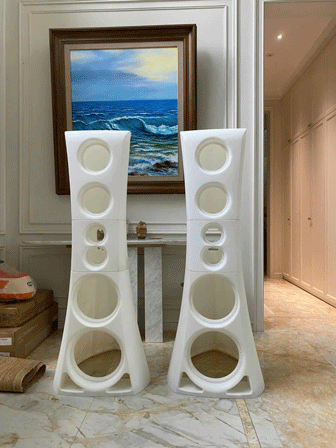Things You Need to Know
3D printing technologies have revolutionized the manufacturing industry. These technologies create complex parts with high precision and efficiency. Among these methods, the outstanding technology is binder jetting.
This process uses a liquid binder to bond layers of powder (plastic, metal, sand, etc.) together. Binder jetting technology offers high production speeds and is very flexible. This technology supports large-scale production and complex shapes.
Industries such as automotive and consumer goods benefit from its capabilities. It is a prominent trend in manufacturing technology. This process helps determine the most suitable technology for specific needs.
1. Learn about Adhesive Spraying Technology
What is Adhesive Spraying Technology?
Definition and Basic Principles
This technology is a unique additive manufacturing process. An industrial printhead sprays a liquid binder onto a thin layer of powder material. This process builds parts layer by layer, similar to printing on sheets of paper. The binder acts as a glue, binding the powder particles together.
This technology can use a variety of materials, including metals, ceramics, and composites. Binder spraying technology creates complex shapes with high precision.

Differences from other 3D printing technologies
Binder jetting technology stands out from other 3D printing technologies. It does not require support structures, unlike many other methods. This feature reduces material usage and post-processing time. Binder jetting technology also allows up to 99% of the loose powder to be recycled and reused. This efficiency makes it cost-effective.
The technology allows for the production of multiple parts in a single print. This ability reduces costs and development time. The technology produces isotropic parts, which means they have the same strength in all directions.
2. History of Binder Spray Technology
Origin and Development
The origin of this technology was developed at MIT (Massachusetts Institute of Technology) in 1990. Researchers developed this technology to use inkjet printheads. This new research used a binder to a layer of metal powder. This process created “green” parts similar to those produced by metal injection molding.
Over time, this technology has evolved to include a variety of materials. These materials have expanded its applications in many industries.
Milestones in its development
The advent of this technology metal revolutionized the manufacturing industry. This advancement allowed the creation of metal parts through additive manufacturing. This technology has grown rapidly, allowing for larger parts and the use of a wider variety of materials. Binder jetting technology now supports industries such as automotive, aerospace, and consumer goods. This process continues to evolve, providing new opportunities for innovation.
3. Adhesive Spraying Process

Layering and Bonding
Binder jetting begins with spreading a thin layer of powder onto the print platform.
An industrial print head sprays a liquid binder onto the powder. This binder acts as a glue, binding the particles together.
This process is repeated layer by layer until the part is complete. Each layer builds on the previous layer, creating intricate designs and complex shapes.
Post-Processing Techniques
Post-processing varies depending on the material used in binder jetting. Metals and ceramics typically require thermal post-processing through a sintering process. Sintering increases the density and strength of printed parts. Polymer materials may need to be infiltrated with secondary materials to increase strength. These steps ensure that the final product meets the desired mechanical properties.
Equipment and machinery
Các loại máy in được sử dụng
It uses specialized printers designed for precision and efficiency. These machines process a wide range of materials, including metals, polymers, and ceramics. The technology allows for color printing and fast production speeds. The printer achieves different mechanical properties by adjusting the proportions and properties of the materials used.

5. Materials Used in Adhesive Spraying Technology
Popular materials

Metals
Binder jetting typically uses metals such as stainless steel, copper, and titanium. These metals offer versatility for a variety of industries, including automotive and aerospace. The process involves layering metal powder on a base. A binder then bonds the layers together. This method allows for the production of high-volume metal parts. Metal binder jetting requires post-processing steps such as sintering to achieve the desired properties.
Foundry Sand
Foundry sand is a material used in the production of molds and cores in the foundry industry. It can withstand the impact and pressure of liquid metal at high temperatures, and maintain the shape and size of the casting. In the casting process, the foundry sand is mixed with binders, water, etc. to form a sand mold or sand core, providing a mold for pouring liquid metal.


Ceramics
Ceramics play an important role in binder jetting technology. This process uses ceramic powders to create parts with excellent thermal and electrical insulation properties. Industries such as electronics and healthcare benefit from ceramic parts. Binder jetting technology allows for the creation of complex ceramic shapes without the need for molds. This technology supports the production of complex designs with high precision.
6. Material properties and notes
Strength and Durability
Binder jetting produces parts with varying strengths and durability. Material selection significantly affects these properties. Metals typically provide high strength and wear resistance. Ceramics provide excellent hardness and thermal stability. Post-processing techniques such as sintering further enhance these properties. Understanding the properties of the material ensures optimal performance in the final product.
Cost considerations
Cost considerations play an important role in binder jetting. The process itself is cost-effective due to minimal material loss. However, the initial equipment investment can be significant. Material selection affects overall costs. Metals may require additional post-processing, which increases costs. Ceramics may involve less post-processing but may have higher raw material costs. Evaluating these factors helps make informed manufacturing decisions.
7. Advantages of Binder Jetting
Speed and Efficiency
Binder jetting offers exceptional manufacturing speeds. The process builds parts layer by layer without the need for support structures. This method allows for the rapid creation of complex designs. Manufacturers benefit from high productivity compared to other technologies such as PBF. The ability to produce multiple parts simultaneously increases throughput.
Fast Manufacturing Capabilities
Binder jetting excels in its ability to produce fast. It rivals traditional methods due to its speed. Industries achieve fast turnaround times, meeting tight deadlines. The lack of support structures reduces post-processing delays. This efficiency makes binder jetting a preferred choice for large-scale manufacturing.
Cost-effectiveness
Cost savings play a major role in the appeal of binder jetting. The process minimizes material waste by recycling unused powder. Manufacturers experience lower operating costs compared to other 3D printing methods. The reduced need for support structures further reduces costs. Binder jetting provides an economical solution for producing high-quality parts.
Design Flexibility
Binder jetting supports complex and detailed designs. It allows for detailed shapes that are difficult to achieve with other methods. Designers explore creative possibilities without constraints. The freedom to experiment with shapes and designs enhances creativity.
Complex Shapes
The ability to create complex shapes is what binder jetting is all about. Engineers design parts with complex internal structures. This technology handles challenging designs with ease. This capability opens up new avenues in industries such as aerospace and medical devices.
Customization Options
Customization becomes seamless with binder jetting technology. The process adapts to specific requirements without extensive tooling changes. Manufacturers offer tailored solutions to meet their customers’ unique needs. Design flexibility ensures that each part fits the exact specifications.
THANK YOU TO OUR CUSTOMERS AND PARTNERS FOR YOUR TRUST AND SUPPORT
Địa chỉ: BT6-30 Ngoại giao đoàn, phường Xuân Tảo, quận Bắc Từ Liêm, Hà Nội
Hot.line: 0862170366
Email: contact@scantechvn.com / kdscantech@gmail.com
Web: scantechvn.com
Facebook: https://www.facebook.com/scantechvn
OTHER NEWS
